THE METROPOLITAN AREA OF BARCELONA HOSTS MANIFESTA 15
Manifesta, the European nomadic biennial, as it is defined, returns to Spain after past editions in San Sebastian (2004) and Murcia (2010) and will hold its 15th edition in the Metropolitan Area of Barcelona from September 8 to November 24. The multidisciplinary program of actions and exhibitions will be developed around the concept of place and time, focusing, through the exhibition venues chosen in the twelve participating municipalities, on the past, present and future of this region.
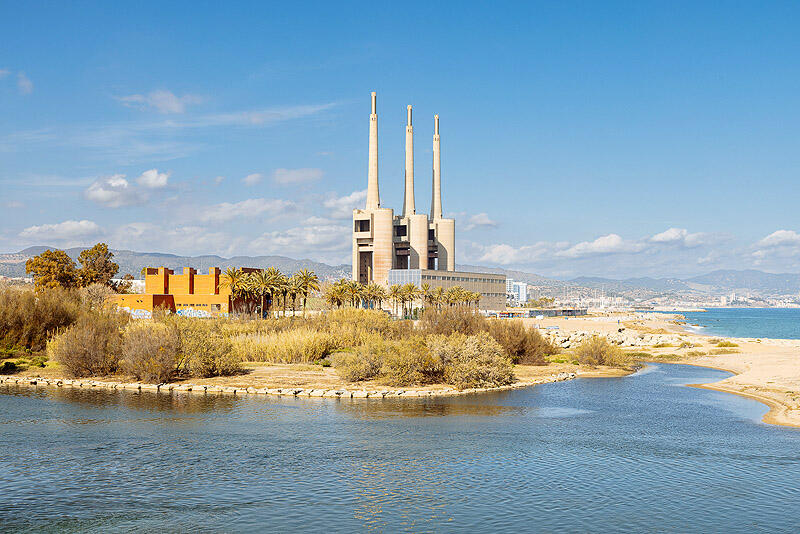
The Manifesta 15 program will propose three thematic and geographic lines around which the activities will be structured and which respond to the desire to investigate the relationship between naturalization and urbanization and with readings on the political, community and environmental challenges facing the region. Thus, Equilibrando conflictos (Balancing conflicts), which will take place in the Llobregat River delta; Cuidar y cuidarnos (Caring and taking care of ourselves), in the Collserola mountain range and the natural region of Vallés; and Imaginando futuros (Imagining futures), in the Besós River and northeast coast, will serve not only as a storyline, but also as a framework for interaction with the public and local agents.
The fifteenth edition of Manifesta will feature eighty-five participants, who will show their works and their line of argument along with that of the biennial in a total of sixteen venues. Out of the list of participants, several essential names of Latin American contemporary art stand out along with other emerging artists. Thus, Imagining Futures will feature the work of Carolina Caycedo; Balancing Conflicts with that of Anna Mendieta, Chile's Enrique Ramirez or Colombia's Felipe Romero Beltran; and in Caring and Taking Care of Ourselves, with that of Cuba's Jose Bedia.
May interest you
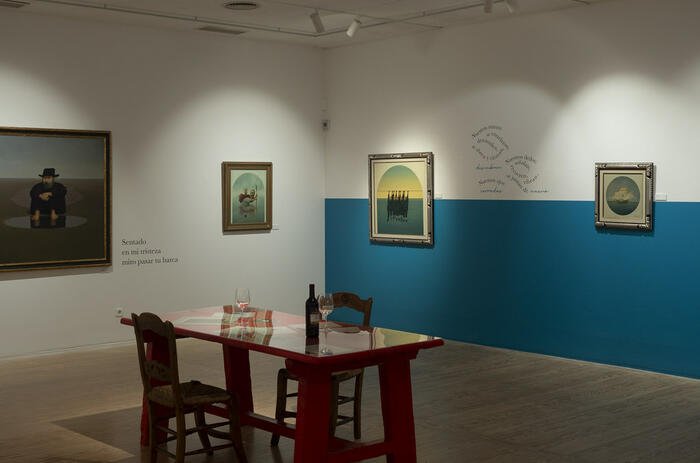
The world of Alfredo Castañeda (Mexico City, Mexico, 1930 - Madrid, Spain, 2010) is also the ours one. It can be said that, from his narrative poetry and his visual poetry, the Mexican artist accessed a universe that, although its protagonist might seem alien to us, is, in truth, the description through archetypes of a reality that surrounds us. The exhibition that Casa de America in Madrid dedicates to him can boast of compiling all those themes that give shape to those themes of mystical and surrealist character, of that fantastic touch that all life has and that passes through the filter of the experiences of each one and, in this case, of the language with which Castañeda captures it.
THE DREAMLIKE SYMBOLISM OF ALFREDO CASTAÑEDA
The world of Alfredo Castañeda (Mexico City, Mexico, 1930 - Madrid, Spain, 2010) is also the ours one. It can be said that, from his narrative poetry and his visual poetry, the Mexican artist accessed a universe that, although its protagonist might seem alien to us, is, in truth, the description through archetypes of a reality that surrounds us. The exhibition that Casa de America in Madrid dedicates to him can boast of compiling all those themes that give shape to those themes of mystical and surrealist character, of that fantastic touch that all life has and that passes through the filter of the experiences of each one and, in this case, of the language with which Castañeda captures it.

The world of Alfredo Castañeda (Mexico City, Mexico, 1930 - Madrid, Spain, 2010) is also the ours one. It can be said that, from his narrative poetry and his visual poetry, the Mexican artist accessed a universe that, although its protagonist might seem alien to us, is, in truth, the description through archetypes of a reality that surrounds us. The exhibition that Casa de America in Madrid dedicates to him can boast of compiling all those themes that give shape to those themes of mystical and surrealist character, of that fantastic touch that all life has and that passes through the filter of the experiences of each one and, in this case, of the language with which Castañeda captures it.
THE DREAMLIKE SYMBOLISM OF ALFREDO CASTAÑEDA
The world of Alfredo Castañeda (Mexico City, Mexico, 1930 - Madrid, Spain, 2010) is also the ours one. It can be said that, from his narrative poetry and his visual poetry, the Mexican artist accessed a universe that, although its protagonist might seem alien to us, is, in truth, the description through archetypes of a reality that surrounds us. The exhibition that Casa de America in Madrid dedicates to him can boast of compiling all those themes that give shape to those themes of mystical and surrealist character, of that fantastic touch that all life has and that passes through the filter of the experiences of each one and, in this case, of the language with which Castañeda captures it.
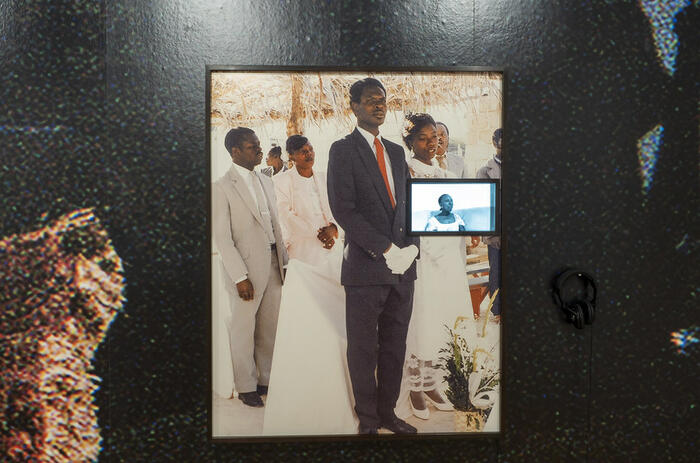
Widline Cadet (Pétion-Ville, Haiti, 1992) brings together in her life experience several of the aspects and themes that, perhaps, have inspired more production among all those curatorial lines with more presence. Her biography, constructed through childhood memories, the environment of a generation and a country marked by its own strong culture or the phenomena of emigration, constitutes the framework in which the photographer develops the practical integrity of her work.
MEMORY AND DIASPORA IN WIDLINE CADET
Widline Cadet (Pétion-Ville, Haiti, 1992) brings together in her life experience several of the aspects and themes that, perhaps, have inspired more production among all those curatorial lines with more presence. Her biography, constructed through childhood memories, the environment of a generation and a country marked by its own strong culture or the phenomena of emigration, constitutes the framework in which the photographer develops the practical integrity of her work.
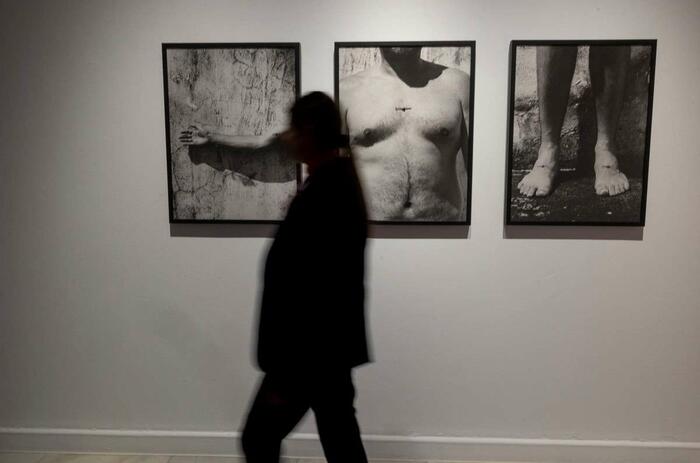
Concrete Wounds/Herida concreta is the exhibition that the Canary Islands' Centro Atlántico de Arte Moderno (CAAM) is dedicating to Karlo Andrei Ibarra (San Juan, Puerto Rico, 1982), one of the most promising and internationally renowned names of the Puerto Rican art scene.
THE POLITICAL AND SOCIAL MEANINGS OF KARLO ANDREI IBARRA AT CAAM
Concrete Wounds/Herida concreta is the exhibition that the Canary Islands' Centro Atlántico de Arte Moderno (CAAM) is dedicating to Karlo Andrei Ibarra (San Juan, Puerto Rico, 1982), one of the most promising and internationally renowned names of the Puerto Rican art scene.
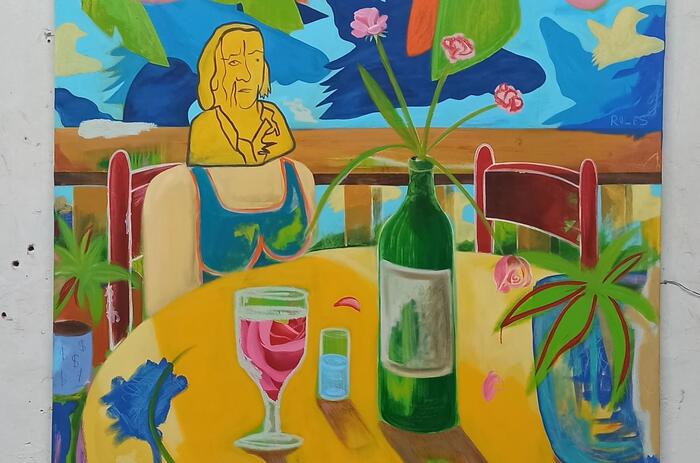
The birth of a new collective is always good news, and it is so for several reasons. Firstly, because of the existence of collective dynamics that bring together different points of view and, second, because, in a didactic way, it contributes to illustrate and understand the current cartographies of art. For the Revolú collective, formed by Andrés Meléndez (San Juan, Puerto Rico, 1996), Miguel Ángel Feba (San Juan, Puerto Rico, 1994) and Marcos Daniel Vicéns (Bayamón, Puerto Rico, 1996), their first exhibition experience is the result of an artistic residency in which, almost blindly, they have been able to build those specific ties to start from the individual and reach the group identity.
GENESIS AND BORICUA RESONANCES IN REVOLÚ
The birth of a new collective is always good news, and it is so for several reasons. Firstly, because of the existence of collective dynamics that bring together different points of view and, second, because, in a didactic way, it contributes to illustrate and understand the current cartographies of art. For the Revolú collective, formed by Andrés Meléndez (San Juan, Puerto Rico, 1996), Miguel Ángel Feba (San Juan, Puerto Rico, 1994) and Marcos Daniel Vicéns (Bayamón, Puerto Rico, 1996), their first exhibition experience is the result of an artistic residency in which, almost blindly, they have been able to build those specific ties to start from the individual and reach the group identity.
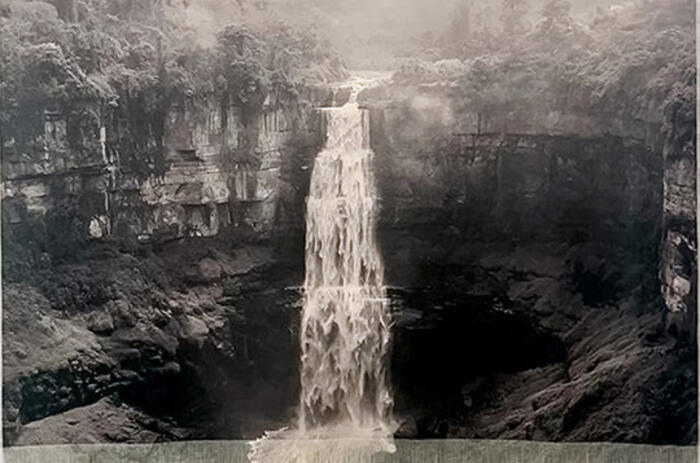
By Álvaro de Benito
The Madrid branch of La Cometa gallery presents during July the work of eight of its Ibero-American artists in a group show that delves into different languages and techniques, from ceramics to painting, and also includes dialogues with architecture and other productions. Three of those represented come from Spain, while of the five American representatives, four are Colombian and one is Cuban, which brings a representative vision of the gallery's artistic proposal closer to the spectator.
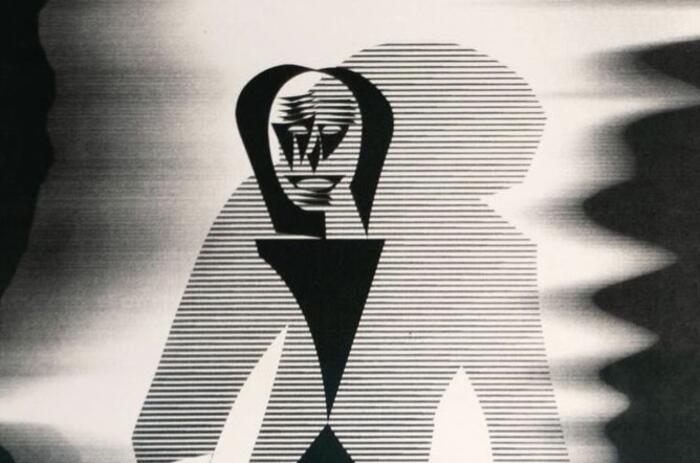
The Mexican Cultural Institute in Spain hosts the group exhibition En el interior del cielo, a show that gathers some of the most prestigious Mexican artists from the collection of Lorena Pérez-Jácome and Javier Lumbreras.
COMMUNITY AND COLLECTION AT THE CULTURAL INSTITUTE OF MEXICO
The Mexican Cultural Institute in Spain hosts the group exhibition En el interior del cielo, a show that gathers some of the most prestigious Mexican artists from the collection of Lorena Pérez-Jácome and Javier Lumbreras.
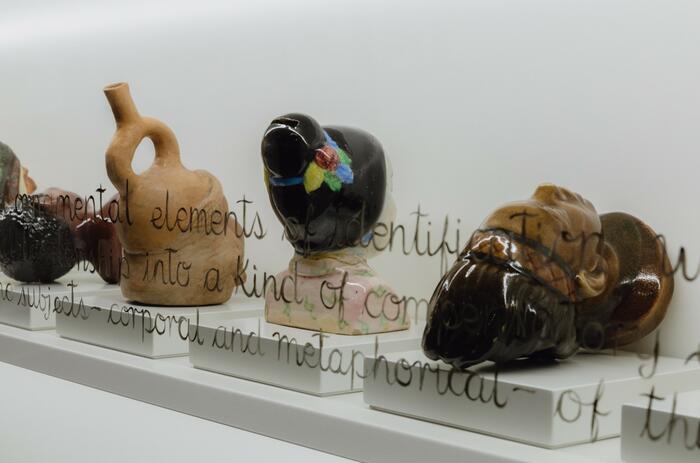
Spanish-Peruvian artist Sandra Gamarra Heshiki represents Spain at the Venice Biennale. It is the first time in 60 editions that an artist not born in Spain does so. Her project Pinacoteca migrante (Migrant gallery), questions colonial narratives and historical modes of representation.
PINACOTECA MIGRANTE: SPAIN AT THE VENICE BIENNALE
Spanish-Peruvian artist Sandra Gamarra Heshiki represents Spain at the Venice Biennale. It is the first time in 60 editions that an artist not born in Spain does so. Her project Pinacoteca migrante (Migrant gallery), questions colonial narratives and historical modes of representation.
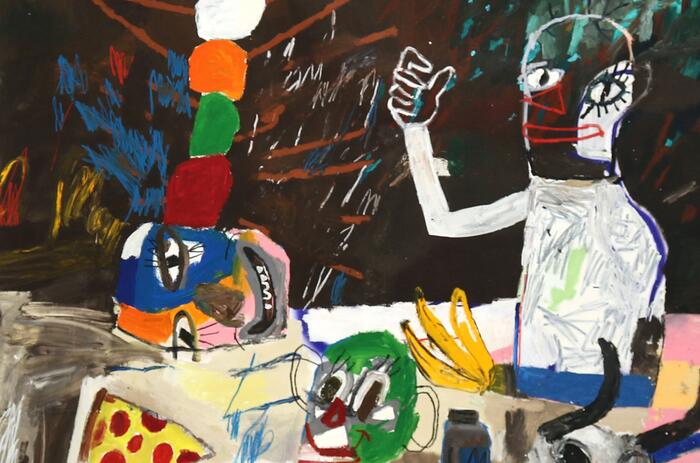
The powerful painting of Starsky Brines (Caracas, Venezuela, 1977) has in his most recent production the consolidation of one of the most intense expressions of the Latin American panorama. Collected under the accurate epigraph of Paisajes imposibles (Impossible Landscapes), the exhibition invites the spectator to let himself be impacted and submerged in a world as unreal and dreamlike as it is sometimes grotesque. These adjectives, more typical of the symptomatology of the society that underlies each of the Venezuelan's pictorial interpretations, seem to originate in the different angles that converge in Brines' universe.
HYBRID IDENTITY AND SOCIETY IN STARSKY BRINES
The powerful painting of Starsky Brines (Caracas, Venezuela, 1977) has in his most recent production the consolidation of one of the most intense expressions of the Latin American panorama. Collected under the accurate epigraph of Paisajes imposibles (Impossible Landscapes), the exhibition invites the spectator to let himself be impacted and submerged in a world as unreal and dreamlike as it is sometimes grotesque. These adjectives, more typical of the symptomatology of the society that underlies each of the Venezuelan's pictorial interpretations, seem to originate in the different angles that converge in Brines' universe.
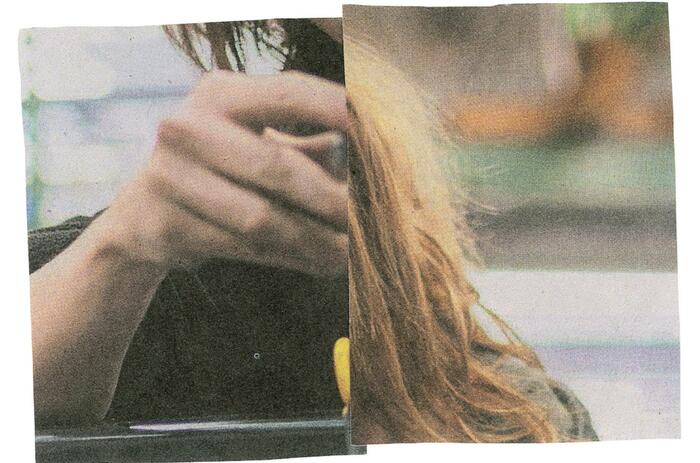
El Centro Botín presenta Partitura, la primera exposición en España de la artista suiza Silvia Bächli.
LAS PARTITURAS DE SILVIA BÄCHLI EN EL CENTRO BOTÍN
El Centro Botín presenta Partitura, la primera exposición en España de la artista suiza Silvia Bächli.
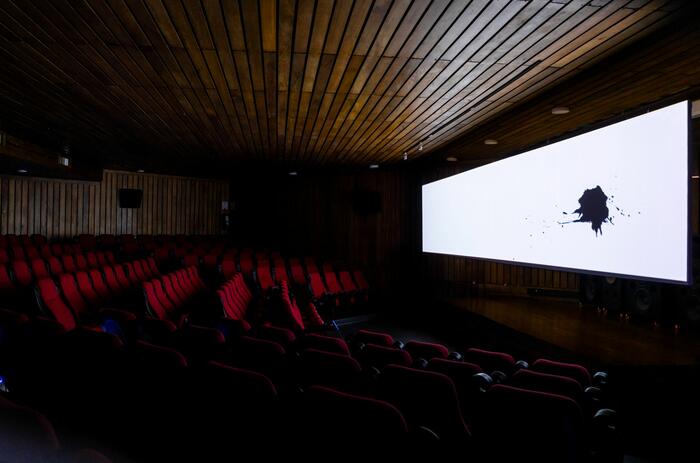
Cronotopías at the Museo de Arte Moderno de Bogotá (MAMBO) is the first institutional retrospective in Colombia dedicated to the visionary work of Argentinean artist Silvia Rivas. Since the late 1990s, Rivas has explored the expressive possibilities of expanded cinema, pushing the boundaries of video as a medium and creating multimedia and immersive environments. The exhibition is curated by Eugenio Viola.
SILVIA RIVAS AND THE LIMITS BETWEEN TIME AND SPACE
Cronotopías at the Museo de Arte Moderno de Bogotá (MAMBO) is the first institutional retrospective in Colombia dedicated to the visionary work of Argentinean artist Silvia Rivas. Since the late 1990s, Rivas has explored the expressive possibilities of expanded cinema, pushing the boundaries of video as a medium and creating multimedia and immersive environments. The exhibition is curated by Eugenio Viola.
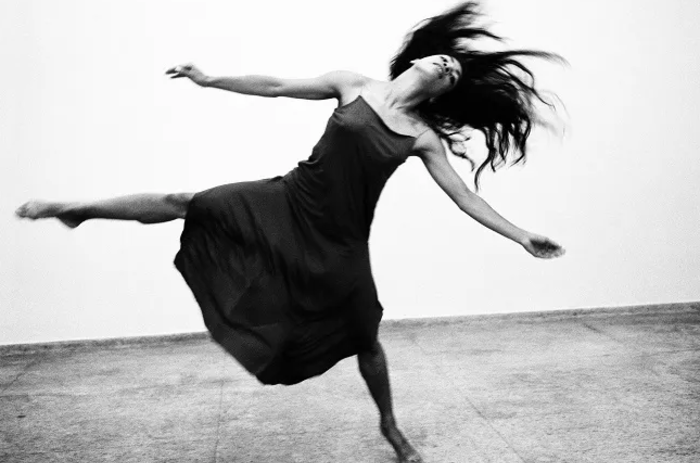
The trajectory of Barbara Brändli (Schaffhousen, Switzerland 1932 - Caracas, Venezuela, 2011) in photography requires a conscientious analysis of several points. Without stopping at them, it is very likely to miss the reason for her approach, her vision that transcends the documentary as a simple objective or her contributions to that world that she began to consolidate in that Venezuela of welcome on her arrival in South America from her native Switzerland.
BARBARA BRÄNDLI, FROM THE OTHER SIDE
The trajectory of Barbara Brändli (Schaffhousen, Switzerland 1932 - Caracas, Venezuela, 2011) in photography requires a conscientious analysis of several points. Without stopping at them, it is very likely to miss the reason for her approach, her vision that transcends the documentary as a simple objective or her contributions to that world that she began to consolidate in that Venezuela of welcome on her arrival in South America from her native Switzerland.

The world of Alfredo Castañeda (Mexico City, Mexico, 1930 - Madrid, Spain, 2010) is also the ours one. It can be said that, from his narrative poetry and his visual poetry, the Mexican artist accessed a universe that, although its protagonist might seem alien to us, is, in truth, the description through archetypes of a reality that surrounds us. The exhibition that Casa de America in Madrid dedicates to him can boast of compiling all those themes that give shape to those themes of mystical and surrealist character, of that fantastic touch that all life has and that passes through the filter of the experiences of each one and, in this case, of the language with which Castañeda captures it.
THE DREAMLIKE SYMBOLISM OF ALFREDO CASTAÑEDA
The world of Alfredo Castañeda (Mexico City, Mexico, 1930 - Madrid, Spain, 2010) is also the ours one. It can be said that, from his narrative poetry and his visual poetry, the Mexican artist accessed a universe that, although its protagonist might seem alien to us, is, in truth, the description through archetypes of a reality that surrounds us. The exhibition that Casa de America in Madrid dedicates to him can boast of compiling all those themes that give shape to those themes of mystical and surrealist character, of that fantastic touch that all life has and that passes through the filter of the experiences of each one and, in this case, of the language with which Castañeda captures it.

Widline Cadet (Pétion-Ville, Haiti, 1992) brings together in her life experience several of the aspects and themes that, perhaps, have inspired more production among all those curatorial lines with more presence. Her biography, constructed through childhood memories, the environment of a generation and a country marked by its own strong culture or the phenomena of emigration, constitutes the framework in which the photographer develops the practical integrity of her work.
MEMORY AND DIASPORA IN WIDLINE CADET
Widline Cadet (Pétion-Ville, Haiti, 1992) brings together in her life experience several of the aspects and themes that, perhaps, have inspired more production among all those curatorial lines with more presence. Her biography, constructed through childhood memories, the environment of a generation and a country marked by its own strong culture or the phenomena of emigration, constitutes the framework in which the photographer develops the practical integrity of her work.

Concrete Wounds/Herida concreta is the exhibition that the Canary Islands' Centro Atlántico de Arte Moderno (CAAM) is dedicating to Karlo Andrei Ibarra (San Juan, Puerto Rico, 1982), one of the most promising and internationally renowned names of the Puerto Rican art scene.
THE POLITICAL AND SOCIAL MEANINGS OF KARLO ANDREI IBARRA AT CAAM
Concrete Wounds/Herida concreta is the exhibition that the Canary Islands' Centro Atlántico de Arte Moderno (CAAM) is dedicating to Karlo Andrei Ibarra (San Juan, Puerto Rico, 1982), one of the most promising and internationally renowned names of the Puerto Rican art scene.

The birth of a new collective is always good news, and it is so for several reasons. Firstly, because of the existence of collective dynamics that bring together different points of view and, second, because, in a didactic way, it contributes to illustrate and understand the current cartographies of art. For the Revolú collective, formed by Andrés Meléndez (San Juan, Puerto Rico, 1996), Miguel Ángel Feba (San Juan, Puerto Rico, 1994) and Marcos Daniel Vicéns (Bayamón, Puerto Rico, 1996), their first exhibition experience is the result of an artistic residency in which, almost blindly, they have been able to build those specific ties to start from the individual and reach the group identity.
GENESIS AND BORICUA RESONANCES IN REVOLÚ
The birth of a new collective is always good news, and it is so for several reasons. Firstly, because of the existence of collective dynamics that bring together different points of view and, second, because, in a didactic way, it contributes to illustrate and understand the current cartographies of art. For the Revolú collective, formed by Andrés Meléndez (San Juan, Puerto Rico, 1996), Miguel Ángel Feba (San Juan, Puerto Rico, 1994) and Marcos Daniel Vicéns (Bayamón, Puerto Rico, 1996), their first exhibition experience is the result of an artistic residency in which, almost blindly, they have been able to build those specific ties to start from the individual and reach the group identity.

By Álvaro de Benito
The Madrid branch of La Cometa gallery presents during July the work of eight of its Ibero-American artists in a group show that delves into different languages and techniques, from ceramics to painting, and also includes dialogues with architecture and other productions. Three of those represented come from Spain, while of the five American representatives, four are Colombian and one is Cuban, which brings a representative vision of the gallery's artistic proposal closer to the spectator.

The Mexican Cultural Institute in Spain hosts the group exhibition En el interior del cielo, a show that gathers some of the most prestigious Mexican artists from the collection of Lorena Pérez-Jácome and Javier Lumbreras.
COMMUNITY AND COLLECTION AT THE CULTURAL INSTITUTE OF MEXICO
The Mexican Cultural Institute in Spain hosts the group exhibition En el interior del cielo, a show that gathers some of the most prestigious Mexican artists from the collection of Lorena Pérez-Jácome and Javier Lumbreras.

Spanish-Peruvian artist Sandra Gamarra Heshiki represents Spain at the Venice Biennale. It is the first time in 60 editions that an artist not born in Spain does so. Her project Pinacoteca migrante (Migrant gallery), questions colonial narratives and historical modes of representation.
PINACOTECA MIGRANTE: SPAIN AT THE VENICE BIENNALE
Spanish-Peruvian artist Sandra Gamarra Heshiki represents Spain at the Venice Biennale. It is the first time in 60 editions that an artist not born in Spain does so. Her project Pinacoteca migrante (Migrant gallery), questions colonial narratives and historical modes of representation.

The powerful painting of Starsky Brines (Caracas, Venezuela, 1977) has in his most recent production the consolidation of one of the most intense expressions of the Latin American panorama. Collected under the accurate epigraph of Paisajes imposibles (Impossible Landscapes), the exhibition invites the spectator to let himself be impacted and submerged in a world as unreal and dreamlike as it is sometimes grotesque. These adjectives, more typical of the symptomatology of the society that underlies each of the Venezuelan's pictorial interpretations, seem to originate in the different angles that converge in Brines' universe.
HYBRID IDENTITY AND SOCIETY IN STARSKY BRINES
The powerful painting of Starsky Brines (Caracas, Venezuela, 1977) has in his most recent production the consolidation of one of the most intense expressions of the Latin American panorama. Collected under the accurate epigraph of Paisajes imposibles (Impossible Landscapes), the exhibition invites the spectator to let himself be impacted and submerged in a world as unreal and dreamlike as it is sometimes grotesque. These adjectives, more typical of the symptomatology of the society that underlies each of the Venezuelan's pictorial interpretations, seem to originate in the different angles that converge in Brines' universe.

El Centro Botín presenta Partitura, la primera exposición en España de la artista suiza Silvia Bächli.
LAS PARTITURAS DE SILVIA BÄCHLI EN EL CENTRO BOTÍN
El Centro Botín presenta Partitura, la primera exposición en España de la artista suiza Silvia Bächli.

Cronotopías at the Museo de Arte Moderno de Bogotá (MAMBO) is the first institutional retrospective in Colombia dedicated to the visionary work of Argentinean artist Silvia Rivas. Since the late 1990s, Rivas has explored the expressive possibilities of expanded cinema, pushing the boundaries of video as a medium and creating multimedia and immersive environments. The exhibition is curated by Eugenio Viola.
SILVIA RIVAS AND THE LIMITS BETWEEN TIME AND SPACE
Cronotopías at the Museo de Arte Moderno de Bogotá (MAMBO) is the first institutional retrospective in Colombia dedicated to the visionary work of Argentinean artist Silvia Rivas. Since the late 1990s, Rivas has explored the expressive possibilities of expanded cinema, pushing the boundaries of video as a medium and creating multimedia and immersive environments. The exhibition is curated by Eugenio Viola.

The trajectory of Barbara Brändli (Schaffhousen, Switzerland 1932 - Caracas, Venezuela, 2011) in photography requires a conscientious analysis of several points. Without stopping at them, it is very likely to miss the reason for her approach, her vision that transcends the documentary as a simple objective or her contributions to that world that she began to consolidate in that Venezuela of welcome on her arrival in South America from her native Switzerland.
BARBARA BRÄNDLI, FROM THE OTHER SIDE
The trajectory of Barbara Brändli (Schaffhousen, Switzerland 1932 - Caracas, Venezuela, 2011) in photography requires a conscientious analysis of several points. Without stopping at them, it is very likely to miss the reason for her approach, her vision that transcends the documentary as a simple objective or her contributions to that world that she began to consolidate in that Venezuela of welcome on her arrival in South America from her native Switzerland.

The world of Alfredo Castañeda (Mexico City, Mexico, 1930 - Madrid, Spain, 2010) is also the ours one. It can be said that, from his narrative poetry and his visual poetry, the Mexican artist accessed a universe that, although its protagonist might seem alien to us, is, in truth, the description through archetypes of a reality that surrounds us. The exhibition that Casa de America in Madrid dedicates to him can boast of compiling all those themes that give shape to those themes of mystical and surrealist character, of that fantastic touch that all life has and that passes through the filter of the experiences of each one and, in this case, of the language with which Castañeda captures it.
THE DREAMLIKE SYMBOLISM OF ALFREDO CASTAÑEDA
The world of Alfredo Castañeda (Mexico City, Mexico, 1930 - Madrid, Spain, 2010) is also the ours one. It can be said that, from his narrative poetry and his visual poetry, the Mexican artist accessed a universe that, although its protagonist might seem alien to us, is, in truth, the description through archetypes of a reality that surrounds us. The exhibition that Casa de America in Madrid dedicates to him can boast of compiling all those themes that give shape to those themes of mystical and surrealist character, of that fantastic touch that all life has and that passes through the filter of the experiences of each one and, in this case, of the language with which Castañeda captures it.

Widline Cadet (Pétion-Ville, Haiti, 1992) brings together in her life experience several of the aspects and themes that, perhaps, have inspired more production among all those curatorial lines with more presence. Her biography, constructed through childhood memories, the environment of a generation and a country marked by its own strong culture or the phenomena of emigration, constitutes the framework in which the photographer develops the practical integrity of her work.
MEMORY AND DIASPORA IN WIDLINE CADET
Widline Cadet (Pétion-Ville, Haiti, 1992) brings together in her life experience several of the aspects and themes that, perhaps, have inspired more production among all those curatorial lines with more presence. Her biography, constructed through childhood memories, the environment of a generation and a country marked by its own strong culture or the phenomena of emigration, constitutes the framework in which the photographer develops the practical integrity of her work.

Concrete Wounds/Herida concreta is the exhibition that the Canary Islands' Centro Atlántico de Arte Moderno (CAAM) is dedicating to Karlo Andrei Ibarra (San Juan, Puerto Rico, 1982), one of the most promising and internationally renowned names of the Puerto Rican art scene.
THE POLITICAL AND SOCIAL MEANINGS OF KARLO ANDREI IBARRA AT CAAM
Concrete Wounds/Herida concreta is the exhibition that the Canary Islands' Centro Atlántico de Arte Moderno (CAAM) is dedicating to Karlo Andrei Ibarra (San Juan, Puerto Rico, 1982), one of the most promising and internationally renowned names of the Puerto Rican art scene.

The birth of a new collective is always good news, and it is so for several reasons. Firstly, because of the existence of collective dynamics that bring together different points of view and, second, because, in a didactic way, it contributes to illustrate and understand the current cartographies of art. For the Revolú collective, formed by Andrés Meléndez (San Juan, Puerto Rico, 1996), Miguel Ángel Feba (San Juan, Puerto Rico, 1994) and Marcos Daniel Vicéns (Bayamón, Puerto Rico, 1996), their first exhibition experience is the result of an artistic residency in which, almost blindly, they have been able to build those specific ties to start from the individual and reach the group identity.
GENESIS AND BORICUA RESONANCES IN REVOLÚ
The birth of a new collective is always good news, and it is so for several reasons. Firstly, because of the existence of collective dynamics that bring together different points of view and, second, because, in a didactic way, it contributes to illustrate and understand the current cartographies of art. For the Revolú collective, formed by Andrés Meléndez (San Juan, Puerto Rico, 1996), Miguel Ángel Feba (San Juan, Puerto Rico, 1994) and Marcos Daniel Vicéns (Bayamón, Puerto Rico, 1996), their first exhibition experience is the result of an artistic residency in which, almost blindly, they have been able to build those specific ties to start from the individual and reach the group identity.

By Álvaro de Benito
The Madrid branch of La Cometa gallery presents during July the work of eight of its Ibero-American artists in a group show that delves into different languages and techniques, from ceramics to painting, and also includes dialogues with architecture and other productions. Three of those represented come from Spain, while of the five American representatives, four are Colombian and one is Cuban, which brings a representative vision of the gallery's artistic proposal closer to the spectator.

The Mexican Cultural Institute in Spain hosts the group exhibition En el interior del cielo, a show that gathers some of the most prestigious Mexican artists from the collection of Lorena Pérez-Jácome and Javier Lumbreras.
COMMUNITY AND COLLECTION AT THE CULTURAL INSTITUTE OF MEXICO
The Mexican Cultural Institute in Spain hosts the group exhibition En el interior del cielo, a show that gathers some of the most prestigious Mexican artists from the collection of Lorena Pérez-Jácome and Javier Lumbreras.

Spanish-Peruvian artist Sandra Gamarra Heshiki represents Spain at the Venice Biennale. It is the first time in 60 editions that an artist not born in Spain does so. Her project Pinacoteca migrante (Migrant gallery), questions colonial narratives and historical modes of representation.
PINACOTECA MIGRANTE: SPAIN AT THE VENICE BIENNALE
Spanish-Peruvian artist Sandra Gamarra Heshiki represents Spain at the Venice Biennale. It is the first time in 60 editions that an artist not born in Spain does so. Her project Pinacoteca migrante (Migrant gallery), questions colonial narratives and historical modes of representation.

The powerful painting of Starsky Brines (Caracas, Venezuela, 1977) has in his most recent production the consolidation of one of the most intense expressions of the Latin American panorama. Collected under the accurate epigraph of Paisajes imposibles (Impossible Landscapes), the exhibition invites the spectator to let himself be impacted and submerged in a world as unreal and dreamlike as it is sometimes grotesque. These adjectives, more typical of the symptomatology of the society that underlies each of the Venezuelan's pictorial interpretations, seem to originate in the different angles that converge in Brines' universe.
HYBRID IDENTITY AND SOCIETY IN STARSKY BRINES
The powerful painting of Starsky Brines (Caracas, Venezuela, 1977) has in his most recent production the consolidation of one of the most intense expressions of the Latin American panorama. Collected under the accurate epigraph of Paisajes imposibles (Impossible Landscapes), the exhibition invites the spectator to let himself be impacted and submerged in a world as unreal and dreamlike as it is sometimes grotesque. These adjectives, more typical of the symptomatology of the society that underlies each of the Venezuelan's pictorial interpretations, seem to originate in the different angles that converge in Brines' universe.

El Centro Botín presenta Partitura, la primera exposición en España de la artista suiza Silvia Bächli.
LAS PARTITURAS DE SILVIA BÄCHLI EN EL CENTRO BOTÍN
El Centro Botín presenta Partitura, la primera exposición en España de la artista suiza Silvia Bächli.

Cronotopías at the Museo de Arte Moderno de Bogotá (MAMBO) is the first institutional retrospective in Colombia dedicated to the visionary work of Argentinean artist Silvia Rivas. Since the late 1990s, Rivas has explored the expressive possibilities of expanded cinema, pushing the boundaries of video as a medium and creating multimedia and immersive environments. The exhibition is curated by Eugenio Viola.
SILVIA RIVAS AND THE LIMITS BETWEEN TIME AND SPACE
Cronotopías at the Museo de Arte Moderno de Bogotá (MAMBO) is the first institutional retrospective in Colombia dedicated to the visionary work of Argentinean artist Silvia Rivas. Since the late 1990s, Rivas has explored the expressive possibilities of expanded cinema, pushing the boundaries of video as a medium and creating multimedia and immersive environments. The exhibition is curated by Eugenio Viola.

The trajectory of Barbara Brändli (Schaffhousen, Switzerland 1932 - Caracas, Venezuela, 2011) in photography requires a conscientious analysis of several points. Without stopping at them, it is very likely to miss the reason for her approach, her vision that transcends the documentary as a simple objective or her contributions to that world that she began to consolidate in that Venezuela of welcome on her arrival in South America from her native Switzerland.
BARBARA BRÄNDLI, FROM THE OTHER SIDE
The trajectory of Barbara Brändli (Schaffhousen, Switzerland 1932 - Caracas, Venezuela, 2011) in photography requires a conscientious analysis of several points. Without stopping at them, it is very likely to miss the reason for her approach, her vision that transcends the documentary as a simple objective or her contributions to that world that she began to consolidate in that Venezuela of welcome on her arrival in South America from her native Switzerland.

The world of Alfredo Castañeda (Mexico City, Mexico, 1930 - Madrid, Spain, 2010) is also the ours one. It can be said that, from his narrative poetry and his visual poetry, the Mexican artist accessed a universe that, although its protagonist might seem alien to us, is, in truth, the description through archetypes of a reality that surrounds us. The exhibition that Casa de America in Madrid dedicates to him can boast of compiling all those themes that give shape to those themes of mystical and surrealist character, of that fantastic touch that all life has and that passes through the filter of the experiences of each one and, in this case, of the language with which Castañeda captures it.
THE DREAMLIKE SYMBOLISM OF ALFREDO CASTAÑEDA
The world of Alfredo Castañeda (Mexico City, Mexico, 1930 - Madrid, Spain, 2010) is also the ours one. It can be said that, from his narrative poetry and his visual poetry, the Mexican artist accessed a universe that, although its protagonist might seem alien to us, is, in truth, the description through archetypes of a reality that surrounds us. The exhibition that Casa de America in Madrid dedicates to him can boast of compiling all those themes that give shape to those themes of mystical and surrealist character, of that fantastic touch that all life has and that passes through the filter of the experiences of each one and, in this case, of the language with which Castañeda captures it.

Widline Cadet (Pétion-Ville, Haiti, 1992) brings together in her life experience several of the aspects and themes that, perhaps, have inspired more production among all those curatorial lines with more presence. Her biography, constructed through childhood memories, the environment of a generation and a country marked by its own strong culture or the phenomena of emigration, constitutes the framework in which the photographer develops the practical integrity of her work.
MEMORY AND DIASPORA IN WIDLINE CADET
Widline Cadet (Pétion-Ville, Haiti, 1992) brings together in her life experience several of the aspects and themes that, perhaps, have inspired more production among all those curatorial lines with more presence. Her biography, constructed through childhood memories, the environment of a generation and a country marked by its own strong culture or the phenomena of emigration, constitutes the framework in which the photographer develops the practical integrity of her work.

Concrete Wounds/Herida concreta is the exhibition that the Canary Islands' Centro Atlántico de Arte Moderno (CAAM) is dedicating to Karlo Andrei Ibarra (San Juan, Puerto Rico, 1982), one of the most promising and internationally renowned names of the Puerto Rican art scene.
THE POLITICAL AND SOCIAL MEANINGS OF KARLO ANDREI IBARRA AT CAAM
Concrete Wounds/Herida concreta is the exhibition that the Canary Islands' Centro Atlántico de Arte Moderno (CAAM) is dedicating to Karlo Andrei Ibarra (San Juan, Puerto Rico, 1982), one of the most promising and internationally renowned names of the Puerto Rican art scene.

The birth of a new collective is always good news, and it is so for several reasons. Firstly, because of the existence of collective dynamics that bring together different points of view and, second, because, in a didactic way, it contributes to illustrate and understand the current cartographies of art. For the Revolú collective, formed by Andrés Meléndez (San Juan, Puerto Rico, 1996), Miguel Ángel Feba (San Juan, Puerto Rico, 1994) and Marcos Daniel Vicéns (Bayamón, Puerto Rico, 1996), their first exhibition experience is the result of an artistic residency in which, almost blindly, they have been able to build those specific ties to start from the individual and reach the group identity.
GENESIS AND BORICUA RESONANCES IN REVOLÚ
The birth of a new collective is always good news, and it is so for several reasons. Firstly, because of the existence of collective dynamics that bring together different points of view and, second, because, in a didactic way, it contributes to illustrate and understand the current cartographies of art. For the Revolú collective, formed by Andrés Meléndez (San Juan, Puerto Rico, 1996), Miguel Ángel Feba (San Juan, Puerto Rico, 1994) and Marcos Daniel Vicéns (Bayamón, Puerto Rico, 1996), their first exhibition experience is the result of an artistic residency in which, almost blindly, they have been able to build those specific ties to start from the individual and reach the group identity.

By Álvaro de Benito
The Madrid branch of La Cometa gallery presents during July the work of eight of its Ibero-American artists in a group show that delves into different languages and techniques, from ceramics to painting, and also includes dialogues with architecture and other productions. Three of those represented come from Spain, while of the five American representatives, four are Colombian and one is Cuban, which brings a representative vision of the gallery's artistic proposal closer to the spectator.

The Mexican Cultural Institute in Spain hosts the group exhibition En el interior del cielo, a show that gathers some of the most prestigious Mexican artists from the collection of Lorena Pérez-Jácome and Javier Lumbreras.
COMMUNITY AND COLLECTION AT THE CULTURAL INSTITUTE OF MEXICO
The Mexican Cultural Institute in Spain hosts the group exhibition En el interior del cielo, a show that gathers some of the most prestigious Mexican artists from the collection of Lorena Pérez-Jácome and Javier Lumbreras.

Spanish-Peruvian artist Sandra Gamarra Heshiki represents Spain at the Venice Biennale. It is the first time in 60 editions that an artist not born in Spain does so. Her project Pinacoteca migrante (Migrant gallery), questions colonial narratives and historical modes of representation.
PINACOTECA MIGRANTE: SPAIN AT THE VENICE BIENNALE
Spanish-Peruvian artist Sandra Gamarra Heshiki represents Spain at the Venice Biennale. It is the first time in 60 editions that an artist not born in Spain does so. Her project Pinacoteca migrante (Migrant gallery), questions colonial narratives and historical modes of representation.

The powerful painting of Starsky Brines (Caracas, Venezuela, 1977) has in his most recent production the consolidation of one of the most intense expressions of the Latin American panorama. Collected under the accurate epigraph of Paisajes imposibles (Impossible Landscapes), the exhibition invites the spectator to let himself be impacted and submerged in a world as unreal and dreamlike as it is sometimes grotesque. These adjectives, more typical of the symptomatology of the society that underlies each of the Venezuelan's pictorial interpretations, seem to originate in the different angles that converge in Brines' universe.
HYBRID IDENTITY AND SOCIETY IN STARSKY BRINES
The powerful painting of Starsky Brines (Caracas, Venezuela, 1977) has in his most recent production the consolidation of one of the most intense expressions of the Latin American panorama. Collected under the accurate epigraph of Paisajes imposibles (Impossible Landscapes), the exhibition invites the spectator to let himself be impacted and submerged in a world as unreal and dreamlike as it is sometimes grotesque. These adjectives, more typical of the symptomatology of the society that underlies each of the Venezuelan's pictorial interpretations, seem to originate in the different angles that converge in Brines' universe.

El Centro Botín presenta Partitura, la primera exposición en España de la artista suiza Silvia Bächli.
LAS PARTITURAS DE SILVIA BÄCHLI EN EL CENTRO BOTÍN
El Centro Botín presenta Partitura, la primera exposición en España de la artista suiza Silvia Bächli.

Cronotopías at the Museo de Arte Moderno de Bogotá (MAMBO) is the first institutional retrospective in Colombia dedicated to the visionary work of Argentinean artist Silvia Rivas. Since the late 1990s, Rivas has explored the expressive possibilities of expanded cinema, pushing the boundaries of video as a medium and creating multimedia and immersive environments. The exhibition is curated by Eugenio Viola.
SILVIA RIVAS AND THE LIMITS BETWEEN TIME AND SPACE
Cronotopías at the Museo de Arte Moderno de Bogotá (MAMBO) is the first institutional retrospective in Colombia dedicated to the visionary work of Argentinean artist Silvia Rivas. Since the late 1990s, Rivas has explored the expressive possibilities of expanded cinema, pushing the boundaries of video as a medium and creating multimedia and immersive environments. The exhibition is curated by Eugenio Viola.

The trajectory of Barbara Brändli (Schaffhousen, Switzerland 1932 - Caracas, Venezuela, 2011) in photography requires a conscientious analysis of several points. Without stopping at them, it is very likely to miss the reason for her approach, her vision that transcends the documentary as a simple objective or her contributions to that world that she began to consolidate in that Venezuela of welcome on her arrival in South America from her native Switzerland.
BARBARA BRÄNDLI, FROM THE OTHER SIDE
The trajectory of Barbara Brändli (Schaffhousen, Switzerland 1932 - Caracas, Venezuela, 2011) in photography requires a conscientious analysis of several points. Without stopping at them, it is very likely to miss the reason for her approach, her vision that transcends the documentary as a simple objective or her contributions to that world that she began to consolidate in that Venezuela of welcome on her arrival in South America from her native Switzerland.

The world of Alfredo Castañeda (Mexico City, Mexico, 1930 - Madrid, Spain, 2010) is also the ours one. It can be said that, from his narrative poetry and his visual poetry, the Mexican artist accessed a universe that, although its protagonist might seem alien to us, is, in truth, the description through archetypes of a reality that surrounds us. The exhibition that Casa de America in Madrid dedicates to him can boast of compiling all those themes that give shape to those themes of mystical and surrealist character, of that fantastic touch that all life has and that passes through the filter of the experiences of each one and, in this case, of the language with which Castañeda captures it.
THE DREAMLIKE SYMBOLISM OF ALFREDO CASTAÑEDA
The world of Alfredo Castañeda (Mexico City, Mexico, 1930 - Madrid, Spain, 2010) is also the ours one. It can be said that, from his narrative poetry and his visual poetry, the Mexican artist accessed a universe that, although its protagonist might seem alien to us, is, in truth, the description through archetypes of a reality that surrounds us. The exhibition that Casa de America in Madrid dedicates to him can boast of compiling all those themes that give shape to those themes of mystical and surrealist character, of that fantastic touch that all life has and that passes through the filter of the experiences of each one and, in this case, of the language with which Castañeda captures it.

Widline Cadet (Pétion-Ville, Haiti, 1992) brings together in her life experience several of the aspects and themes that, perhaps, have inspired more production among all those curatorial lines with more presence. Her biography, constructed through childhood memories, the environment of a generation and a country marked by its own strong culture or the phenomena of emigration, constitutes the framework in which the photographer develops the practical integrity of her work.
MEMORY AND DIASPORA IN WIDLINE CADET
Widline Cadet (Pétion-Ville, Haiti, 1992) brings together in her life experience several of the aspects and themes that, perhaps, have inspired more production among all those curatorial lines with more presence. Her biography, constructed through childhood memories, the environment of a generation and a country marked by its own strong culture or the phenomena of emigration, constitutes the framework in which the photographer develops the practical integrity of her work.

Concrete Wounds/Herida concreta is the exhibition that the Canary Islands' Centro Atlántico de Arte Moderno (CAAM) is dedicating to Karlo Andrei Ibarra (San Juan, Puerto Rico, 1982), one of the most promising and internationally renowned names of the Puerto Rican art scene.
THE POLITICAL AND SOCIAL MEANINGS OF KARLO ANDREI IBARRA AT CAAM
Concrete Wounds/Herida concreta is the exhibition that the Canary Islands' Centro Atlántico de Arte Moderno (CAAM) is dedicating to Karlo Andrei Ibarra (San Juan, Puerto Rico, 1982), one of the most promising and internationally renowned names of the Puerto Rican art scene.

The birth of a new collective is always good news, and it is so for several reasons. Firstly, because of the existence of collective dynamics that bring together different points of view and, second, because, in a didactic way, it contributes to illustrate and understand the current cartographies of art. For the Revolú collective, formed by Andrés Meléndez (San Juan, Puerto Rico, 1996), Miguel Ángel Feba (San Juan, Puerto Rico, 1994) and Marcos Daniel Vicéns (Bayamón, Puerto Rico, 1996), their first exhibition experience is the result of an artistic residency in which, almost blindly, they have been able to build those specific ties to start from the individual and reach the group identity.
GENESIS AND BORICUA RESONANCES IN REVOLÚ
The birth of a new collective is always good news, and it is so for several reasons. Firstly, because of the existence of collective dynamics that bring together different points of view and, second, because, in a didactic way, it contributes to illustrate and understand the current cartographies of art. For the Revolú collective, formed by Andrés Meléndez (San Juan, Puerto Rico, 1996), Miguel Ángel Feba (San Juan, Puerto Rico, 1994) and Marcos Daniel Vicéns (Bayamón, Puerto Rico, 1996), their first exhibition experience is the result of an artistic residency in which, almost blindly, they have been able to build those specific ties to start from the individual and reach the group identity.

By Álvaro de Benito
The Madrid branch of La Cometa gallery presents during July the work of eight of its Ibero-American artists in a group show that delves into different languages and techniques, from ceramics to painting, and also includes dialogues with architecture and other productions. Three of those represented come from Spain, while of the five American representatives, four are Colombian and one is Cuban, which brings a representative vision of the gallery's artistic proposal closer to the spectator.

The Mexican Cultural Institute in Spain hosts the group exhibition En el interior del cielo, a show that gathers some of the most prestigious Mexican artists from the collection of Lorena Pérez-Jácome and Javier Lumbreras.
COMMUNITY AND COLLECTION AT THE CULTURAL INSTITUTE OF MEXICO
The Mexican Cultural Institute in Spain hosts the group exhibition En el interior del cielo, a show that gathers some of the most prestigious Mexican artists from the collection of Lorena Pérez-Jácome and Javier Lumbreras.

Spanish-Peruvian artist Sandra Gamarra Heshiki represents Spain at the Venice Biennale. It is the first time in 60 editions that an artist not born in Spain does so. Her project Pinacoteca migrante (Migrant gallery), questions colonial narratives and historical modes of representation.
PINACOTECA MIGRANTE: SPAIN AT THE VENICE BIENNALE
Spanish-Peruvian artist Sandra Gamarra Heshiki represents Spain at the Venice Biennale. It is the first time in 60 editions that an artist not born in Spain does so. Her project Pinacoteca migrante (Migrant gallery), questions colonial narratives and historical modes of representation.

The powerful painting of Starsky Brines (Caracas, Venezuela, 1977) has in his most recent production the consolidation of one of the most intense expressions of the Latin American panorama. Collected under the accurate epigraph of Paisajes imposibles (Impossible Landscapes), the exhibition invites the spectator to let himself be impacted and submerged in a world as unreal and dreamlike as it is sometimes grotesque. These adjectives, more typical of the symptomatology of the society that underlies each of the Venezuelan's pictorial interpretations, seem to originate in the different angles that converge in Brines' universe.
HYBRID IDENTITY AND SOCIETY IN STARSKY BRINES
The powerful painting of Starsky Brines (Caracas, Venezuela, 1977) has in his most recent production the consolidation of one of the most intense expressions of the Latin American panorama. Collected under the accurate epigraph of Paisajes imposibles (Impossible Landscapes), the exhibition invites the spectator to let himself be impacted and submerged in a world as unreal and dreamlike as it is sometimes grotesque. These adjectives, more typical of the symptomatology of the society that underlies each of the Venezuelan's pictorial interpretations, seem to originate in the different angles that converge in Brines' universe.

El Centro Botín presenta Partitura, la primera exposición en España de la artista suiza Silvia Bächli.
LAS PARTITURAS DE SILVIA BÄCHLI EN EL CENTRO BOTÍN
El Centro Botín presenta Partitura, la primera exposición en España de la artista suiza Silvia Bächli.

Cronotopías at the Museo de Arte Moderno de Bogotá (MAMBO) is the first institutional retrospective in Colombia dedicated to the visionary work of Argentinean artist Silvia Rivas. Since the late 1990s, Rivas has explored the expressive possibilities of expanded cinema, pushing the boundaries of video as a medium and creating multimedia and immersive environments. The exhibition is curated by Eugenio Viola.
SILVIA RIVAS AND THE LIMITS BETWEEN TIME AND SPACE
Cronotopías at the Museo de Arte Moderno de Bogotá (MAMBO) is the first institutional retrospective in Colombia dedicated to the visionary work of Argentinean artist Silvia Rivas. Since the late 1990s, Rivas has explored the expressive possibilities of expanded cinema, pushing the boundaries of video as a medium and creating multimedia and immersive environments. The exhibition is curated by Eugenio Viola.

The trajectory of Barbara Brändli (Schaffhousen, Switzerland 1932 - Caracas, Venezuela, 2011) in photography requires a conscientious analysis of several points. Without stopping at them, it is very likely to miss the reason for her approach, her vision that transcends the documentary as a simple objective or her contributions to that world that she began to consolidate in that Venezuela of welcome on her arrival in South America from her native Switzerland.
BARBARA BRÄNDLI, FROM THE OTHER SIDE
The trajectory of Barbara Brändli (Schaffhousen, Switzerland 1932 - Caracas, Venezuela, 2011) in photography requires a conscientious analysis of several points. Without stopping at them, it is very likely to miss the reason for her approach, her vision that transcends the documentary as a simple objective or her contributions to that world that she began to consolidate in that Venezuela of welcome on her arrival in South America from her native Switzerland.




